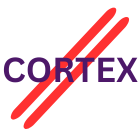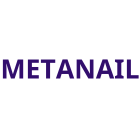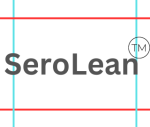Tophotcoupon.com is supported by savers like you. When you buy through links on our site, we may earn an affiliate commission.
Trending Store
All Stores »Latest Coupons
Ending Soon Coupons
Popular Coupons
Latest Coupons
- exclusive
-
0
70% Off Metanail Complex Pro Coupons & Discount Codes for May 2024
VerifiedStaff PickBuy 2 Get 2 Free OfferGet Code
VerifiedStaff Pick70% Off (… Read More
- exclusive
-
2
Neuro Thrive Brain Causemetics Promo Codes
17 Neuro Thrive Brain Causemetics coupon codes for April 2024
VerifiedStaff … Read More
- exclusive
-
0
30% Off Genesis Promo Codes & Coupons
VerifiedStaff PickGenesis.com Discount Code: $40 Off Your Purchase $300+ & … Read More
- exclusive
-
2
Claritox Pro 85% OFF Coupon Code & Claritox Pro Promo Code 2024
VerifiedStaff PickTake 85% OFF Claritox Pro Coupon Code 2024Get Code
Verifie… Read More
- exclusive
-
0
Amiclear Coupons, Promo & Discount Codes for April 2024
VerifiedStaff PickYou are being budget savvy when you shop at tryamiclear.com. … Read More
Ending Soon Coupons
- exclusive
-
0
Stablehost Coupons & Promo Code
VerifiedStaff PickSave 50% Off Store-wide at StableHost.com w/Coupon CodeReveal… Read More
- exclusive
-
50
Udemy Coupons & Promo Codes
VerifiedStaff Pick10% Off SitewideReveal Code
VerifiedStaff PickGet Up to 30… Read More
- exclusive
-
3
Bloom.io Coupon & Promo Code
VerifiedStaff PickBloom & Co Coupon: $10 Off Select ItemsReveal Code
Ve… Read More
- exclusive
-
2
Game of Thrones Coupons & Deals
VerifiedStaff PickUp To 12% Off the Game of Thrones TourGet Deal
VerifiedSta… Read More
- exclusive
-
44
Hostinger Coupons & Promo Codes
VerifiedStaff Pick75% off any orderReveal Code
VerifiedStaff Pick8% off sele… Read More
Popular Coupons
- exclusive
-
957
Mullybox Coupons & Promo Code
VerifiedStaff Pick40% off any orderReveal Code
VerifiedStaff Pick$10 off any… Read More
- exclusive
-
783
Themeforest Coupon & Deals
VerifiedStaff PickeCommerce Templates and Themes as low as $17Get Offer
Veri… Read More
- exclusive
-
461
Debutify Coupons & Promo Code 2024
VerifiedStaff Pick20% off any orderReveal Code
VerifiedStaff Pick30% off 2-M… Read More
- exclusive
-
240
Flycurvy Coupons & Promo Code
VerifiedStaff Pick15% off any orderReveal Code
VerifiedStaff Pick$30 off ord… Read More
- exclusive
-
210
Up To $600 Off Your Purchase
VerifiedStaff PickGet up to $500 less on Stearns & Foster complete bed setG… Read More
Search Coupons

Latest Coupons
We have all the coupons first
Fresh Updates
Coupons are updated regularly



























































